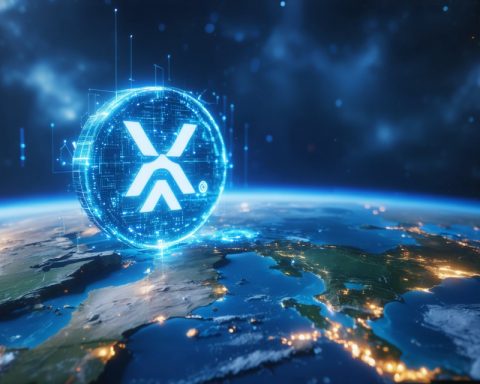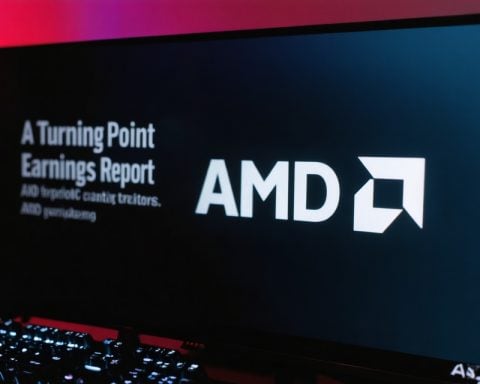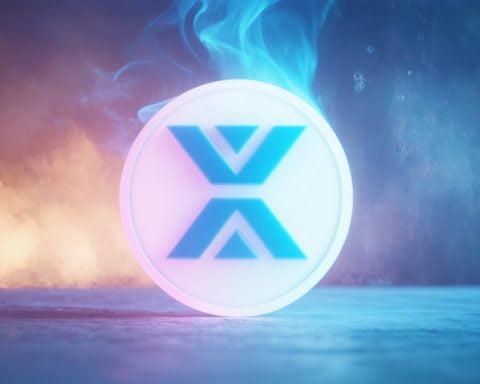- Chinese tech giants like Tencent, Alibaba, and ByteDance are rapidly acquiring Nvidia’s tailored H20 AI chips to drive an artificial intelligence surge.
- The H20 chips are specifically designed to circumvent US export restrictions, fostering significant advancements in AI capabilities in China.
- DeepSeek has developed cost-effective AI models, boosting demand for AI computing power across diverse industries such as healthcare and education.
- Nvidia has experienced substantial success, with projected shipments of a million H20 chips in 2024 and revenue reaching $12 billion.
- Future US export restrictions pose potential challenges, casting uncertainty over Nvidia’s continued prosperity in the Chinese market.
- The rapid evolution of technology, combined with strategic moves, underscores Nvidia’s pivotal role at the intersection of innovation and geopolitics.
Hidden amidst the whir of servers and flickering screens, a quiet revolution is reshaping the landscape of artificial intelligence. Chinese tech giants Tencent, Alibaba, and ByteDance are seizing the moment, eagerly scooping up Nvidia’s H20 AI chips. These chips, crafted specifically for China to sidestep US export restrictions, now stand at the heart of an AI boom fueled by the innovative prowess of DeepSeek’s cost-effective models.
Imagine the bustling corridors of massive data centers, alive with the hum of energy where Nvidia’s chips drive a newfound wave of possibility. DeepSeek caught the world’s attention by creating AI models that are not only robust but also economical, setting the stage for a rush in AI computing power. Industries—from healthcare diagnosing ailments with precision to education systems tailoring learning experiences—are clamoring to harness this technology.
And Nvidia? They’re basking in this spotlight, sending out wave after wave of these silicon marvels. Analysts whisper about numbers: about a million H20 chips shipped in 2024 alone. The dream-machine has yielded an astounding $12 billion in revenue, at least for now.
Yet, the horizon holds clouds of uncertainty. As the US government contemplates tightening its grip with further restrictions, only time will tell how long this golden era for Nvidia in China will last. For the moment, Nvidia is dancing on the edge of innovation and geopolitics, leaving companies and consumers alike eager for what comes next.
The relentless pace of technological advancement, paired with strategic ingenuity, is proving an unstoppable force. The takeaway? In China, Nvidia’s H20 is more than a chip—it’s a ticket to the future.
This AI Chip Revolution is Transforming China – Here’s How!
How-To Steps & Life Hacks
1. Understanding AI Chips: To fully leverage Nvidia’s H20 AI chips, familiarize yourself with their architecture. These chips are designed with specialized cores that can accelerate AI workloads.
2. Deployment: In your data center, consider the power and cooling requirements of running high-performance AI chips like the H20. Proper infrastructure can maximize efficiency.
3. Software Optimization: Utilize software frameworks like TensorFlow or PyTorch that can leverage GPU capabilities. Optimized code ensures smooth operations and enhanced processing power.
Real-World Use Cases
– Healthcare: The H20’s powerful computing can process large datasets, aiding in early detection of diseases through pattern recognition in medical imaging.
– Education: AI models can personalize learning by analyzing student progress and suggesting tailored lessons.
– Finance: Use AI for fraud detection by identifying irregular patterns and anomalies within transaction data.
Market Forecasts & Industry Trends
The AI chip market, with players like Nvidia at the forefront, is projected to grow exponentially. By 2030, the global market for AI hardware is expected to exceed $200 billion, with China seen as a major growth driver due to its strategic investments and large-scale data requirements.
Reviews & Comparisons
Nvidia’s H20 chips are compared favorably against alternatives like AMD’s AI accelerators and Google’s Tensor Processing Units. They are praised for energy efficiency and processing speed but come with a higher price point.
Controversies & Limitations
Geopolitical tensions pose significant risks to Nvidia’s market in China. Changes in export regulations can affect accessibility and pricing. Additionally, there are concerns over reliance on a single supplier for critical AI components, leading to potential supply chain vulnerabilities.
Features, Specs & Pricing
– Features: Designed for machine learning, the H20 chips feature massive parallel processing power, low latency, and high memory bandwidth.
– Specs: Boasting thousands of CUDA cores and advanced cooling tech, these chips excel in processing vast amounts of data quickly.
– Pricing: Expected to be on the higher end, reflecting cutting-edge capabilities and specific design for restricted markets.
Security & Sustainability
– Security: Ensure AI models using these chips are secured against data breaches through encryption and secure data access protocols.
– Sustainability: Nvidia is making strides in energy-efficient designs to mitigate environmental impacts of large data centers.
Insights & Predictions
Experts predict that if export regulations tighten further, Chinese companies might accelerate the development of indigenous AI chip technology, potentially impacting Nvidia’s market share in China.
Pros & Cons Overview
Pros:
– High performance
– Tailored for large-scale AI applications
– Industry-leading support and infrastructure
Cons:
– High costs
– Geopolitical risks
– Supply chain dependency
Actionable Recommendations
1. Investment in Infrastructure: Upgrade data centers to accommodate next-gen AI chips, focusing on cooling and power management.
2. Diversify Chip Suppliers: To mitigate risks, explore alternative AI chip suppliers.
3. Keep Updated on Regulations: Stay informed on trade policies affecting chip imports to plan procurement strategies effectively.
For more on cutting-edge technology innovations, check out TechCrunch.
By understanding these aspects, businesses can better navigate the complex landscape of AI and emerging technologies.


















